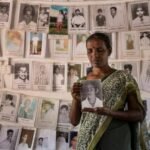How do social media platforms contribute to community building among marginalised groups?
Social media platforms contribute significantly to community building among marginalised groups through several mechanisms:
1. **Creating Safe Spaces:** Social media provides a space where individuals can express their identities, share experiences, and discuss issues relevant to their communities without fear of judgment. This sense of safety fosters openness and connection.
2. **Facilitating Connections:** Users can easily find and connect with others who share similar backgrounds, interests, or struggles. This networking helps marginalised individuals feel less isolated and more supported.
3. **Sharing Resources and Information:** Communities can share valuable resources, such as legal advice, mental health support, educational opportunities, and activism strategies. This information sharing strengthens the community and empowers its members.
4. **Encouraging Dialogue and Support:** Social media platforms enable discussions around shared challenges and experiences, allowing individuals to offer support, share coping strategies, and build solidarity. These dialogues can be therapeutic and affirming.
5. **Organising Events and Activities:** Social media is often used to organise community events, such as meet-ups, workshops, and protests. This mobilisation fosters engagement and collective action, strengthening community ties.
6. **Highlighting Diverse Narratives:** Platforms allow for the sharing of diverse stories and perspectives within marginalised groups, promoting understanding and appreciation of the community’s richness and complexity.
7. **Empowering Advocacy:** Social media enables marginalised communities to advocate for their rights and interests collectively. Campaigns and movements can gain momentum quickly, galvanising support and increasing visibility.
8. **Engaging Allies and Supporters:** Social media facilitates outreach to allies and supporters outside of the community, helping to build a broader network of solidarity. This can amplify the community’s voice and enhance advocacy efforts.
9. **Fostering Cultural Expression:** Marginalised groups often use social media to share their cultural heritage, art, and traditions, promoting pride and unity within the community while educating others.
10. **Creating Long-Lasting Relationships:** Interactions on social media can lead to lasting friendships and partnerships, as individuals find common ground and shared goals, strengthening the community over time.
Through these mechanisms, social media platforms play a crucial role in fostering a sense of belonging and empowerment among marginalised groups, helping them navigate challenges and advocate for their rights more effectively.






